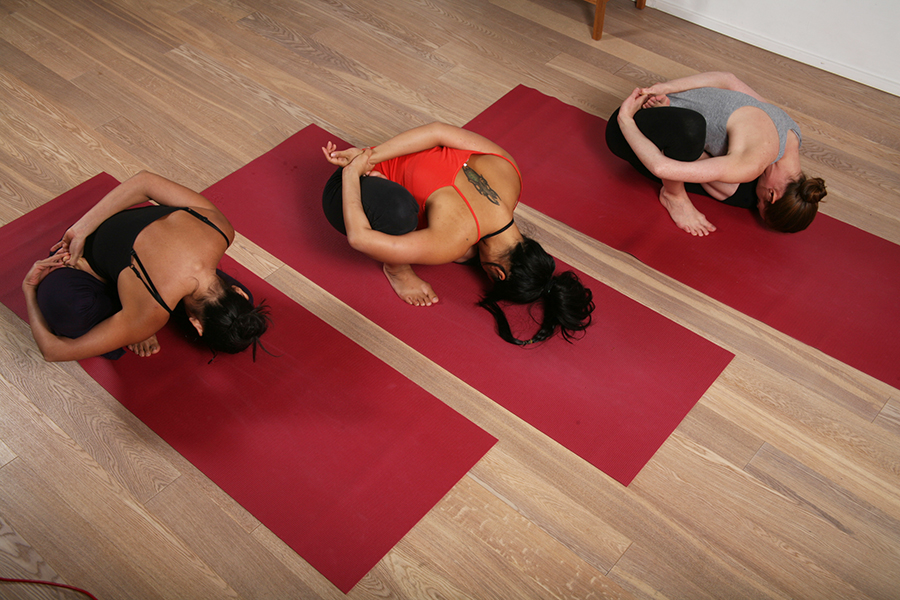
What is Yoga Nidra and how does it help? Yoga Nidra is a deep relaxation practice. You should lie flat on your stomach with your lower back supported by bolsters and your blanket to keep you warm. Yoga Nidra is designed to promote total relaxation. You can meditate this way or use it to help you heal. Read this article for more information. Yoga Nidra's benefits are worth considering.
Meditation
Yoga Nidra, a form of meditation, is very similar to the practice of Yoga Nidra. The body can rest in a meditative, between wakefulness and dreaming state. If the practitioner is sufficiently relaxed, this practice can induce sleep. When the body is in a deep relaxation state, the third and last eye, which are located behind the eyebrows is stimulated, and the pineal hormone activated. The body produces melatonin in this state of meditation. This hormone has been shown to increase sleep quality, reduce aging signs, and boost immunity.
Yoga nidra is a practice that helps to relax and center the student. It can also help the practitioner to connect with his/her consciousness. The practice allows the student tap into their inner resource to find peace in each moment. The student is guided by the practitioner through a script, which includes establishing a Sankalpa or resolve. Yoga nidra is where the student invokes their deepest desires, then relaxes in this state.

In this meditation, the practitioner first sets a Sankalpa, which is the deepest intention. In the next stage, the practitioner is asked to scan his or her body to notice sensations and breath. The meditation then provides instructions on how to breathe so as to help the person drop deeper into the resting state. Meditation also includes guided visualisations and visualizations of light. The practitioner is guided through four different states of brain wave activity before settling into a deep meditative state.
Restorative practice
Yoga Nidra is a guided meditation that is deeply relaxing. You will hold various poses for five to ten minutes while maintaining awareness and a trace of sensation in the body. Restorative Yoga poses promote physical balance and stress prevention. Many restorative yoga poses are seated or supported. These poses can easily be held for several hours and allow you to relax deeply by using props.
The first phase of Yoga Nidra involves a sequence of energetically-aligned postures. The purpose of this meditation is for you to achieve a calm and relaxed state of consciousness. This stage allows the mind to open up and allow the body time to breathe deeply. The second stage is when the body enters deep relaxation, known as delta waves. This is a deep relaxation phase that is very similar to deep sleeping. The final phase is when the mind is still awake but the practitioner remains calm. This allows the practitioner to access past memories as well as subconscious thoughts.
Third stage: This involves lying down in a supported position while you meditate. The practice takes the practitioner into a deep state of relaxation called an alpha-brainwave state, which links conscious thought with the subconscious mind. This practice is an excellent way to deepen sleep and restore balance in the nervous system. It also helps relieve anxiety, depression, and other physical ailments. There are no known side effects of Yoga Nidra, but it can be beneficial for those with stress, insomnia, and other mental conditions.
Therapeutic tool

Yoga Nidra can be used as an adjunctive therapy to treat both acute and chronic conditions. It can be used to recover from trauma or exhaustion, treat pre-surgical and post-surgical conditions, as well reduce chronic inflammation. It uses positive imagery and visualization to infuse healing energy into the affected areas. Here are some examples. Continue reading to learn more.
iRest a specialized technique that can help people manage difficult emotions and regain vital well-being. Many people report feeling more relaxed even after just one iRest sessions. This therapeutic intervention is highly affordable and can be practiced at home with a recording. MUIH will offer Yoga Nidra Level 1 Trainings in May. It can be used in conjunction with other therapeutic approaches to alleviate symptoms of stress, depression, or anxiety.
A systematic practice of Yoga Nidra prepares the body and mind for heightened awareness and deep rejuvenation. Yoga Nidra is appropriate for all levels. It can reduce symptoms such as PTSD, increase coping skills, and induce deep sleep. The two-track Yoga Nidra CD contains the complete practice. It can be used to alleviate stress, anxiety, as well as a range of other conditions. It has many benefits for your mental and physical health.
FAQ
How does mental well-being affect daily life?
Everyone is affected by mental illness at one time or another. Mental illness is not something that people who are suffering from it don't seek treatment. Talk to someone if you feel something is not right. There are many options for dealing with anxiety, depression, stress, such as medication, therapy, exercise, diet and meditation.
Why is it essential to improve emotional health?
Your emotional health is vital for your happiness and well being. A person who isn't emotionally well will be unable to perform at their best. People who suffer from depression often find themselves unable to work effectively. They may also experience anxiety, panic attacks, insomnia, and other symptoms. These conditions can often be successfully treated with medication and therapy.
How can you improve your wellbeing?
Wellbeing refers to "the state or condition of being physically, mentally, spiritually, and socially well." Our well-being is affected by many factors, including family, work and health. The first step to improving your well-being is identifying what aspects of your life need improvement. Then, work on changing these things.
Here are five methods to improve your health and well-being.
-
Exercise - This increases endorphin levels, which makes us happier.
-
Sleep – Sleeping longer than 6 hours each night will reduce anxiety and stress.
-
Nutrition – Eating healthy food (such as fruits or vegetables) will improve your mood.
-
Meditation – Regular meditation reduces anxiety and stress.
-
Socialization - Spending quality time with friends and family makes us happy.
What are some examples of mental-emotional problems?
Any condition that causes major distress or impairment in functioning can be considered mental disorder. Examples of mental disorders include depression, anxiety, bipolar disorder, schizophrenia, borderline personality disorder, obsessive-compulsive disorder, post-traumatic stress disorder, eating disorders, substance abuse, and others.
How can I improve my mental wellbeing?
Mental health is important for everyone, especially when we are stressed out from work, school, family, etc. Regular exercise, healthy eating, quality sleep, and spending time with loved ones are the best ways to improve your mental well-being. Exercise releases endorphins that make us feel happier. A healthy diet is important for our bodies to function properly. A good night's sleep will give you energy throughout the day. And finally, spending quality time with loved ones improves our relationships and reduces stress.
These are 5 ways to improve your mental and/or emotional health.
-
Exercise - It improves brain function and raises energy levels.
-
Sleep - A good way to reduce anxiety and stress is to get enough sleep.
-
Nutrition – Eat healthy foods, such as fruits or vegetables, to keep your body strong.
-
Meditation – Regular meditation can reduce stress and anxiety.
-
Socialization - Spending time with friends and family, keeps us happy and connected.
What is Positive Psychology? Why is it Important?
Positive psychology examines the aspects of positive psychology that can make us feel better about ourselves. These include happiness, optimism. gratitude, hope. kindness. compassion. forgiveness. courage. curiosity. empathy. spirituality. Positive psychology helps individuals feel happier, healthier, wiser and more fulfilled through self-improvement.
There are two types, trait positive psychology and positive process psychology. Trait positive psychology studies how people naturally tend to behave. How we can use certain strategies for achieving specific goals in process positive psychology
Statistics
- More than 50% will be diagnosed with a mental illness or disorder at some point in their lifetime.3 (cdc.gov)
- More than 40 million adults in the United States have an anxiety disorder, but less than 37% of people seek mental health treatment for their symptoms. (talkspace.com)
- It does have some influence, but not nearly as much as we might think, so focusing less on attaining wealth will likely make you happier (Aknin, Norton, & Dunn, 2009); (positivepsychology.com)
- Similarly, while there is some agreement about the boundaries of typical mental disorders 2, there is likely less agreement about those for positive mental health. (ncbi.nlm.nih.gov)
- Neuropsychiatric diseases are the leading cause of death and disability in the U.S., accounting for 18.7 percent of all years of potential lifespan loss and premature mortality.
External Links
How To
How to find out if you should seek the help of a mental health specialist
You should look out for signs that indicate that you might need professional assistance to determine if your problem needs to be addressed. If you notice any warning signs, it's best to consult a doctor.
-
You feel lost in your own head.
-
You have been experiencing trouble sleeping.
-
Your thoughts seem to race when you try to concentrate.
-
You think about suicide.
-
It is difficult to believe in your own ability to make it through.
-
It feels like your life isn’t worth living.
-
You have lost interest in things you used to love.
-
You've stopped eating.
-
You have been removed.
-
You've tried using alcohol or drugs to deal with stress.
-
You are starting to lose family or friends.
-
Other physical symptoms include headaches, stomachaches and backaches, as well as chest pains.
These are all signs that you should look out for.